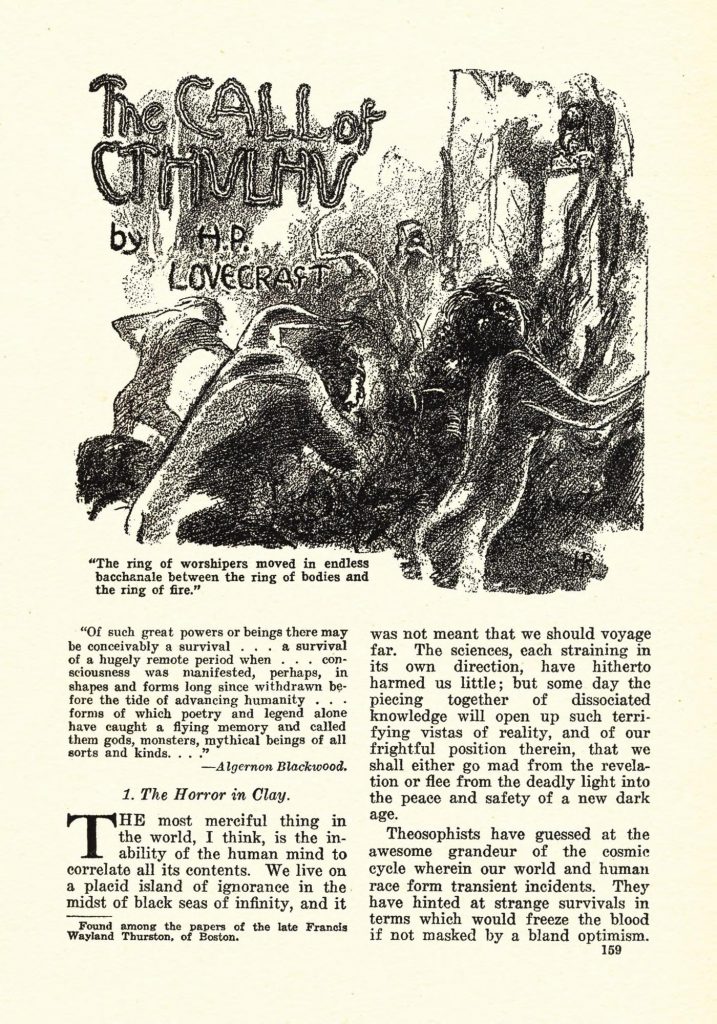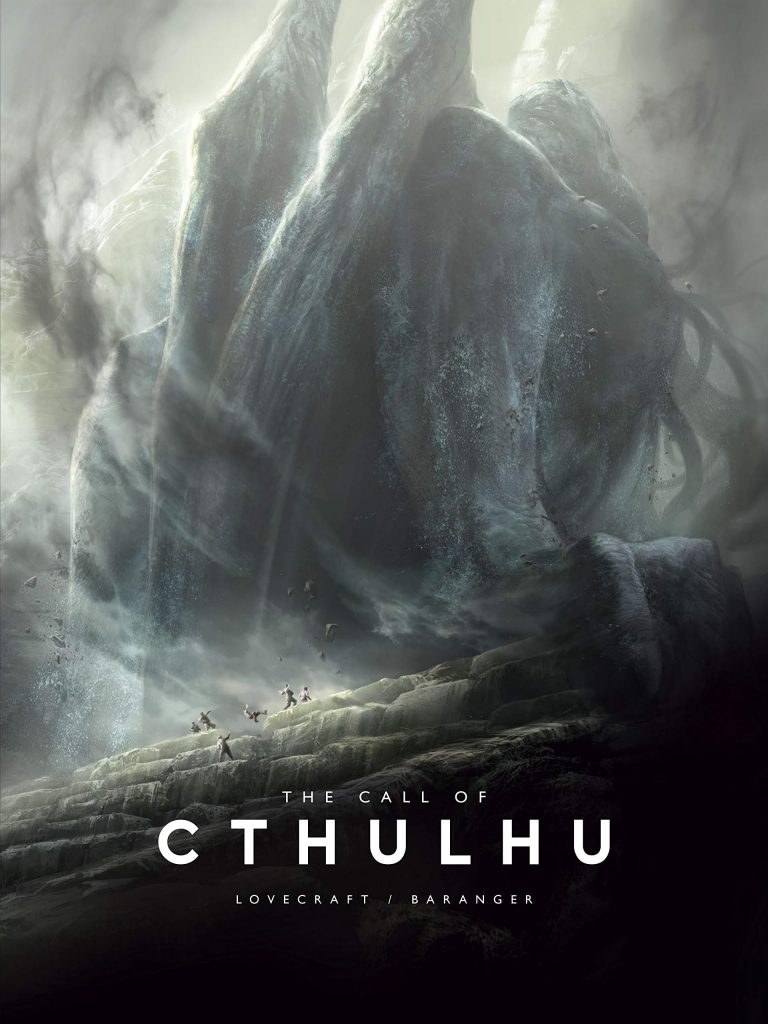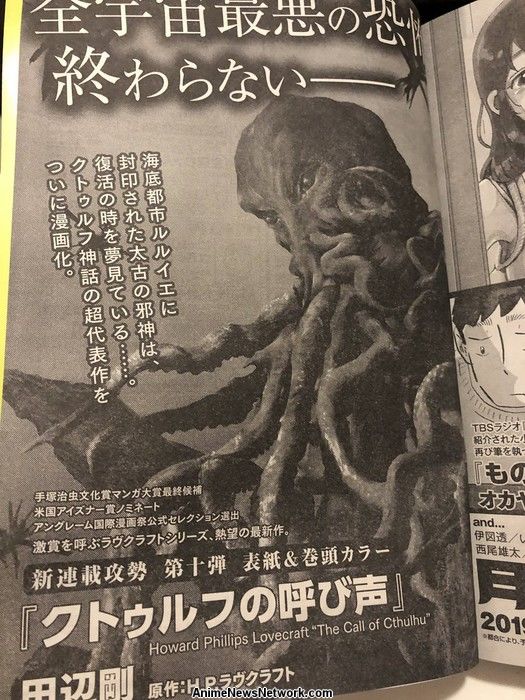Lovecraft wrote his first tale featuring Cthulhu, The Call of Cthulhu, in 1926. It was published two years later in the pulp magazine Weird Tales. Lovecraft was particularly fond of his creation. He established a detailed genealogy for the creature — which he never published: Lovecraft only mentioned it in a letter. According to this, Cthulhu is the son of Nug, who is the son of Yog-Sothoth and Shub-Niggurath. He has spawned a bunch of offspring which are called the ‘Star Spawn of Cthulhu’. Whether his brood looks anything like their father is uncertain. In Lovecraft’s universe, that’s certainly not a given.

Cthulhu didn’t return as an ‘active’ character in Lovecraft’s other tales, but the author did refer to the Outer God again in The Dunwich Horror, The Whisperer in Darkness, and The Mountains of Madness. Thus he established Cthulhu as a central feature in his universe. Lovecraft’s follower and correspondent August Derleth came up with the term Cthulhu Mythos to describe Lovecraft’s pantheon of sinister ‘gods’ lurking in the dark corners of his weird tales. Although Lovecraft worked out a genealogy for some of his ‘gods’ — mostly in jest, I gather — it never became a tight-fitting scheme. His stories often contradict each other. Consistency never mattered to Lovecraft. He was just having a bit of fun. Atmosphere was the important thing in his stories. It was Derleth who tried to impose a more rigid logic on the Cthulhu Mythos, turning the Outer Gods into the baddies and the Elder Gods into the more benevolent beings in Lovecraft’s universe. Nothing could have been further from Lovecraft’s original intentions. In his view, his god-like beings were utterly unfathomable, literally beyond good and evil.
What makes Cthulhu such a powerful creation are his bizarre looks and the threatening mysteriousness of the creature. Lovecraft described a statue representing Cthulhu in The Call of Cthulhu as follows:
‘A monster of vaguely anthropoid outline, but with an octopus-like head whose face was a mass of feelers, a scaly, rubbery-looking body, prodigious claws on hind and fore feet, and long, narrow wings behind.’
Long after Lovecraft’s death, Cthulhu became the blueprint from which all tentacular monsters in modern horror were copied. The internet is teeming with illustrations of Lovecraft’s famous creature. I can’t show any of them for copyright reasons, but I’d like to point out two brilliant draughtsmen to you. François Baranger is a French illustrator, concept artist and film director. He illustrated two Lovecraft stories — At the Mountains of Madness and The Call of Cthulhu — and his artwork is stunning. Gou Tanabe is a Japanese Manga artist, and he has also published several Lovecraft adaptations. The Call of Cthulhu is his latest one. It was published in the Monthly Comic Beam magazine in Japan in 2019. A French edition appears in September 2020. All his other titles are available in English at Dark Horse. Gou Tanabe’s series was nominated for Best Comic by the Angoulême International Comics Festival in 2019.


Cthulhu doesn’t actually do much of anything in Lovecraft’s story, and I think that’s his biggest appeal. He’s trapped in a dream state in the ruins of a forgotten underwater city, and his worshippers expect him to rise from the dead at some time or other. I can’t help thinking Lovecraft was having a joke at the expense of Christian millenarianism — Cthulhu as a monster-like Jesus whose Second Coming is eagerly awaited by the faithful. Anyway, The Call of Cthulhu contains Lovecraft’s most famous line of gibberish, and he kindly provided the translation as well:
‘Ph’nglui mglw’nafh Cthulhu R’lyeh wgah’nagl fhtagn’
‘In his house at R’lyeh, dead Cthulhu waits dreaming’
I’m afraid I took some liberties with the character. In Dream Whisperer, there’s not one Cthulhu but many dozens. And they aren’t Outer Gods either. The creatures ‘wait dreaming’ in various locations scattered all over Earth until they’re woken up by the Dream Whisperer to open a portal that will allow the Outer Gods to return. Five of them are needed to accomplish this task. Fleming and his team engage in a race against the clock to prevent their opponent from waking up a sufficient number of Cthulhus. It was great fun toying with such an iconic character.